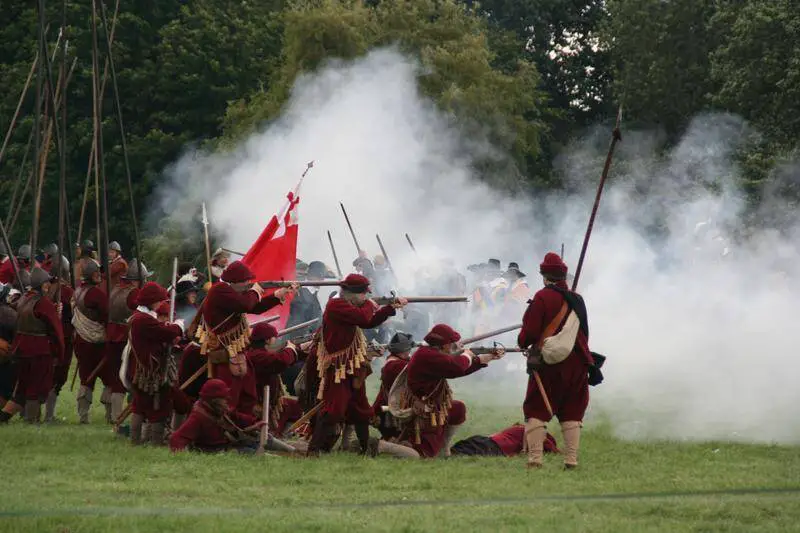Naseby Battlefield guide for visually impaired created as part of an educational outreach project.
It has been 366 years since the battle at Naseby on the 14th June 1965, the battle would be decisive in determining the course of the war.
Two weeks earlier, the Royalist Army under King Charles I had attacked Leicester in order to distract Parliamentary forces – the New Model Army under Sir Thomas Fairfax – which were besieging Oxford.
The Royalists moved south towards Oxford; the Roundheads moved North towards Newark where they hoped to increase their numbers with sufficient reinforcements to retake Leicester.
Things were coming to a head. Charles reach Daventry; Fairfax reached Market Harborough. Crucially, Oliver Cromwell arrived with some cavalry to support Fairfax whereas Charles’ hopes of equine reinforcement were dashed when Lord Goring defied an order to stand down his siege of Taunton and bring his troops to the Midlands.
The tipping point came when Cromwell’s son-in-law Henry Ireton led a cavalry attack on a Royalist outpost at Naseby, six miles south of the main Royalist army, late on 13 June. Charles now had to either retreat or engage. He chose the latter option – and lived to regret it.
Without Goring’s reinforcements, the King could muster about 4,000 cavalry and about 3,000 infantry, all under the command of Prince Rupert of the Rhine. Against this, the New Model Army had about 6,000 cavalry, about 7,000 infantry and about a thousand dragoons (mounted infantry – not the same as cavalry). Although early success went to the Royalists, some of their cavalry on their left flank departed the field to pursue fleeing NMA cavalry back to the Parliamentarian camp at Naseby village itself.
On the other side of the field, skilful commanding by Cromwell broke the ranks of the King’s men, who were hampered by having to charge uphill across a large rabbit warren, and an abortive attempt by Charles himself to lead a small reserve into battle served only to create confusion. As Fairfax’s men advanced, the Royalists turned and fled, many being chased down and butchered in the wake of the battle.
Four days later, Fairfax’s army retook Leicester then marched south to relieve Taunton. Naseby was the turning point in the English Civil War and Charles’ defeat led inexorably to the executioner’s block (in 1649) and the country’s brief spell as a republic.
Mililtary historian Martin Marix Evans is an Honorary Visiting Fellow in our Centre for English Local History and also Deputy Chairman of the Naseby Battlefield Project (NBP) which works to preserve the battlefield and provide educational resources explaining the battle and its significance.
Three years ago, Martin secured funding for The Sound of Battle, a scripted audio recreation of the event, acted out by students from Abbeyfield School and narrated by Robert Hardy. Now a new audio facility has been made available by the NBP: audio tours of the battlefield for the visually impaired.
Based on research from the Centre for English Local History and Nottingham Trent University, the eight recordings of around five minutes each tell the story of the battle with a multi-voice mixture of documentary description and readings from contemporary accounts, enlivened by music and sound effects.
The recordings were produced by Leicester-based company Watch This Space – who have created similar recordings for venues such as Snibston Discovery Museum, New Walk Museum and Adhby-de-la-Zouch Castle – with funding from MLA Renaissance East Midlands and advice from Northamptonshire Association for the Blind. The Naseby Battlefield Project is a registered charity and has recently received planning permission for a visitor centre on the site.
Downloadable from the NBP website as a series of MP3s, the descriptions of the field and the battle can be listened to via an MP3 player or smartphone, allowing visually impaired history fans to discover Naseby on foot in the same way as sighted visitors who can make use of the information boards and Battlefield Trail leaflet.
Do please take care though, as that treacherous rabbit warren might still be there.
Header Image – Public Domain





